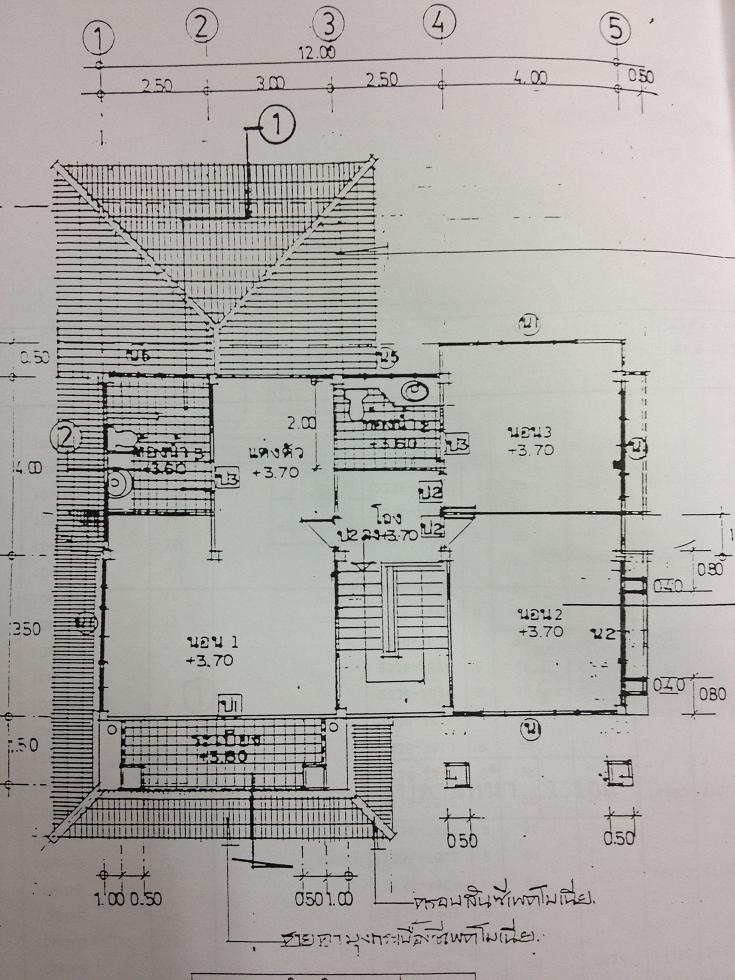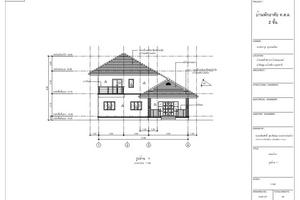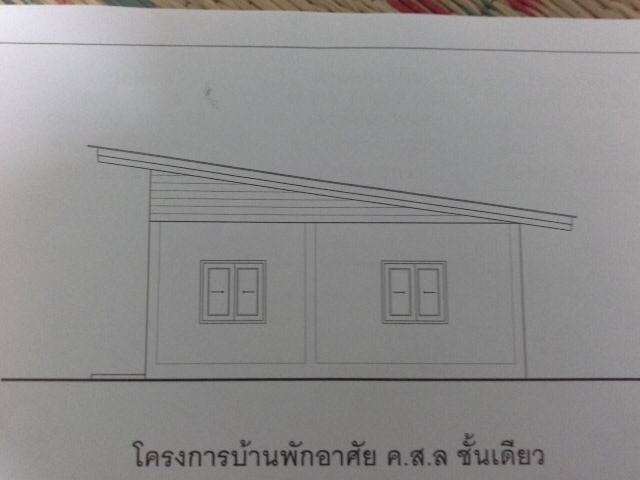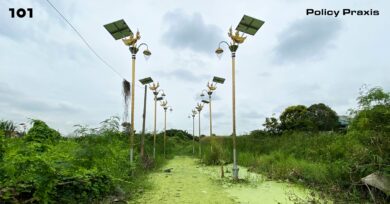TÓM TẮT
แบบ อบ ต
Introduction:
แบบ อบ ต, also known as organizational set design, is a crucial aspect of building and managing efficient organizations. It involves the deliberate arrangement and structuring of various components within an organization to optimize its productivity and effectiveness. In this article, we will explore the objectives, steps, and strategies involved in creating and developing an effective organizational set design. We will also discuss the role of technology, the importance of integration and interdepartmental coordination, and the alignment of the set design with the organization’s culture. Furthermore, we will touch upon performance measurement and evaluation in order to gauge the success of the organizational set design in achieving its intended goals. Let us delve deeper into each of these aspects to understand how to create and implement successful organizational set designs.
Objectives of Organizational Set Design:
The primary objective of organizational set design is to create a structure that fosters efficiency, clarity, and accountability within an organization. By defining roles and responsibilities, the set design ensures that everyone understands their tasks and functions within the organization. It also aims to optimize the utilization of resources, minimize redundancies or overlaps, and enable effective decision-making and communication.
Steps in Creating and Developing an Organizational Set Design:
1. Define the organizational goals and objectives: Start by understanding the organization’s mission, vision, and strategic objectives. This will help in determining the desired outcomes and aligning the set design accordingly.
2. Analyze the current organizational structure: Assess the existing organizational structure to identify its strengths and weaknesses. This analysis should consider factors such as the span of control, reporting relationships, and coordination mechanisms.
3. Determine the key functions and departments: Identify the core functions required to achieve the organizational goals. Categorize these functions into departments or units, ensuring clear divisions of responsibilities. Consider factors like functional expertise, workflow, and dependencies.
4. Define roles and responsibilities: Clearly articulate the roles and responsibilities of each position within the organizational structure. This includes outlining the decision-making authority, reporting relationships, and accountability requirements.
5. Establish communication channels and workflows: Design effective communication channels to ensure smooth information flow within and across departments. Establish streamlined workflows that promote collaboration and coordination.
6. Evaluate resource allocation: Allocate resources appropriately based on the organizational needs and priorities. This includes human resources, financial resources, and technological infrastructure.
7. Implement the organizational set design: Execute the plan by communicating the changes to all stakeholders and facilitating a seamless transition to the new structure. Regularly monitor the implementation process to identify and address any challenges or bottlenecks.
Defining Roles and Responsibilities in Each Organizational Structure:
In every organizational structure, it is crucial to define roles and responsibilities clearly to avoid confusion and promote accountability. This involves identifying key positions, outlining their duties and authorities, and establishing reporting relationships. By doing so, employees understand their tasks, reporting lines, and performance expectations, leading to increased efficiency and productivity.
Improving and Developing Organizational Set Design:
Organizational set designs are not static but should evolve and adapt as the organization grows or faces new challenges. To ensure continuous improvement, organizations should periodically evaluate the effectiveness of the set design and identify areas for enhancement. This can be done through feedback mechanisms, performance reviews, and benchmarking against industry standards. Regular training and skill development programs should also be provided to support employees in adapting to any changes in the organizational set design.
Technology-driven Organizational Formats and Structures:
In today’s digital age, technology plays a vital role in organizational set design. It has revolutionized the way organizations operate, communicate, and access information. Technology-driven formats and structures, such as virtual teams, remote work, and cloud-based collaboration tools, have become increasingly popular. These advancements allow for greater flexibility, scalability, and efficiency. Organizations need to leverage these technologies to optimize their operations and enhance productivity.
Integration and Interdepartmental Coordination:
Integration and interdepartmental coordination are key elements of successful organizational set design. By breaking down silos and encouraging cross-functional collaboration, organizations can achieve greater synergy and efficiency. This can be achieved through effective communication channels, shared goals, and collaborative decision-making processes. Regular meetings, joint projects, and interdepartmental training programs can also foster a culture of collaboration and coordination.
Alignment of Organizational Set Design with Organizational Culture:
A well-designed organizational set must align with the organization’s culture. The set design should reflect the values, beliefs, and norms that guide the organization’s behavior. Failure to align the set design with the culture can result in conflicts, resistance to change, and decreased organizational effectiveness. Therefore, it is essential to ensure that the organizational set design is in harmony with the existing culture or, if required, initiate cultural changes that support the set design.
Performance Measurement and Evaluation of Organizational Set Design:
To assess the effectiveness of the organizational set design, performance measurement and evaluation frameworks should be established. This involves defining key performance indicators (KPIs) that reflect the organization’s overall objectives and regularly monitoring and analyzing these indicators. It is important to involve all stakeholders in the evaluation process to ensure a comprehensive and unbiased assessment. Feedback from employees, customers, and other external stakeholders should also be considered to gain a holistic view of the organization’s performance.
FAQs:
1. What is the difference between organizational set design and organizational structure?
Organizational set design refers to the deliberate arrangement and structuring of various components within an organization to optimize its productivity and efficiency. Organizational structure, on the other hand, focuses specifically on the hierarchical arrangement of positions and reporting relationships within the organization.
2. How often should an organization review its organizational set design?
Organizations should periodically review their organizational set designs to ensure they remain effective and aligned with changing business needs. The frequency of these reviews may vary depending on factors such as the organization’s size, industry, and rate of growth.
3. Can an organization have multiple organizational set designs?
Yes, an organization can have different organizational set designs for different departments, units, or projects. These designs should be tailored to the specific needs and goals of each area while still aligning with the overall organizational objectives.
4. What role does technology play in organizational set design?
Technology plays a significant role in organizational set design as it enables efficient communication, collaboration, and information management. It facilitates the implementation of various organizational formats and structures such as virtual teams and remote work arrangements.
5. How can an organization ensure that its organizational set design aligns with its culture?
To ensure alignment, organizations should assess their culture and identify the values, beliefs, and norms that guide their behavior. The organizational set design should then be developed in a way that supports and reinforces these cultural aspects. Transparency, open communication, and employee involvement are key in achieving this alignment.
Conclusion:
Efficient organizational design and operations are crucial for the success of any organization. An effective organizational set design promotes efficiency, clarity, and accountability within an organization. By following the steps outlined in this article, organizations can create and develop a structure that optimizes their resources, facilitates effective communication and decision-making, and enables them to achieve their strategic goals. Technology-driven formats, integration and coordination, alignment with organizational culture, and performance measurement and evaluation are key elements to consider in designing and improving organizational set designs. With a well-designed organizational set, organizations can enhance productivity, foster innovation, and adapt to a rapidly changing business environment.
พื้นที่ อบต. กับการขออนุญาตก่อสร้างอาคารอยู่อาศัยไม่เกิน 2 ชั้น ไม่เกิน 150 ตารางเมตร
คำสำคัญที่ผู้ใช้ค้นหา: แบบ อบ ต แบบก่อสร้าง อบต, เอกสาร อบ ต, แบบ ประกาศ อบ ต, ระเบียบการขอใช้สถานที่ราชการ อบต, แบบฟอร์มขอใช้สถานที่ อบต, อบ ต. ชลบุรี, อบ ต. บ่อวิน, อบ ต บางเสาธง ภาษาอังกฤษ
รูปภาพที่เกี่ยวข้องกับหัวข้อ แบบ อบ ต

หมวดหมู่: Top 28 แบบ อบ ต
ดูเพิ่มเติมที่นี่: buoitutrung.com
แบบก่อสร้าง อบต
แบบก่อสร้าง อบต คือรูปแบบการก่อสร้างหรือสถาปนิกผู้อำนวยการ ที่กำหนดขั้นตอนการดำเนินงานให้เป็นระเบียบวิธีเฉพาะเจาะจงที่ดีและมีอยู่อย่างถูกต้องตามที่กำหนดเอาไว้ในอุทธรณ์ หรือหนังสือตอบโต้ราคาที่แจกแจงรายละเอียดเนื้อหาของงานต่างๆ รวมทั้งเงื่อนไขการรับเสนอราคาที่ผู้รับจ้างกำหนดไว้ให้เป็นเงื่อนไขยอมรับเท่านั้น แบบก่อสร้าง อบต นั้นขึ้นอยู่กับสัญญาที่ผู้สั่งสร้างกำหนดและต่อกรณีที่ผู้รับจ้างไม่ปฏิบัติตามสัญญาก็จะไม่สามารถเรียกร้องหรือบังคับด้วยกฎหมายได้
แบบก่อสร้างที่มีความต้องการให้ทำตามรายละเอียดที่กำหนดไว้ในแบบก่อสร้าง อบต จะมีประโยชน์อย่างมากแก่ฝ่ายสั่งสร้างตลอดจนกับฝ่ายรับจ้างด้วย เนื่องจากจะช่วยกำหนดค่าใช้จ่ายให้อยู่ในขอบเขตที่หนทางชัดเจน รวมถึงช่วยให้สามารถปฏิบัติตามเงื่อนไขกำหนดรัฐมนตรีว่าด้วยโครงการของรัฐ(ร.บ. ๑๒๕๕) แทบจะได้ผลต่อการวางแผนและประมวลผลงานก่อสร้างได้อย่างเหมาะสม
ข้อดีของแบบก่อสร้าง อบต
1. ไม่มีความคล่องตังทางการเงิน
ที่ผู้รับจ้างเป็นผู้จัดหาเงินทุนในการทำงาน ซึ่งจะช่วยให้หลีกเลี่ยงอุปสรรคในการขออนุมัติเบิกเงินก่อสร้างระหว่างก่อสร้าง ส่งผลให้การดำเนินงานเร็วขึ้นและประหยัดค่าใช้จ่ายในการผลิตงาน
2. มีเอกสารแนะนำ
พร้อมกับแบบก่อสร้าง อบต ยังประกอบด้วยเอกสารเสริมอื่นๆ ซึ่งจะช่วยให้ผู้รับจ้างทราบถึงขอบเขตงานของโครงการจําแนกอย่างชัดเจน พร้อมกับให้ข้อมูลเป็นแนวทางสำหรับการจัดเตรียมการและการดำเนินงานต่างๆ ที่จะต้องทำในแต่ละขั้นตอน
3. มีความปลอดภัยมากขึ้น
การดำเนินงานในแบบก่อสร้าง อบต จะเฉพาะเจาะจงและถูกแบ่งออกเป็นขั้นตอนต่างๆ เพื่อให้งานดำเนินไปตามลำดับขั้นตอนที่ต้องเกิดขึ้น ทำให้ผู้รับจ้างและผู้รับมอบหมายงานที่เกี่ยวข้องสามารถติดตามการดำเนินงานในแต่ละขั้นตอนได้ นอกจากนี้ยังสามารถตรวจสอบความถูกต้องของงานในขณะที่กำลังดำเนินงานได้ง่ายขึ้น
FAQs
Q1: แบบก่อสร้าง อบตแตกต่างจากแบบก่อสร้างตามข้อกำหนดทั่วไปอย่างไร?
A1: แบบก่อสร้าง อบต แตกต่างจากแบบก่อสร้างตามข้อกำหนดทั่วไปด้วยการกำหนดรายละเอียดงานไว้ในแต่ละขั้นตอนโดยเฉพาะเจาะจง เพื่อให้การดำเนินงานเป็นไปอย่างถูกต้องและมีขั้นตอนที่ชัดเจน
Q2: ใครควรใช้แบบก่อสร้าง อบต?
A2: แบบก่อสร้าง อบต นั้นเหมาะสำหรับโครงการก่อสร้างที่มีขนาดใหญ่และซับซ้อน โดยเฉพาะในกรณีที่ต้องการความเป็นระเบียบวิธีเฉพาะเจาะจงในการดำเนินงาน
Q3: การสร้างแบบก่อสร้าง อบตจะใช้เวลานานเท่าไร?
A3: เวลาในการสร้างแบบก่อสร้าง อบตจะขึ้นอยู่กับขนาดและความซับซ้อนของโครงการ รวมถึงค่าปรับและสภาพแวดล้อมนั้นๆ อย่างไรก็ตามการใช้แบบก่อสร้าง อบต จะช่วยลดเวลาในการดำเนินงานและเพิ่มประสิทธิภาพในการจัดทำงาน
เอกสาร อบ ต
เอกสาร อบ ต, translated as “obtaining documents,” refers to the process of acquiring various official paperwork in Thailand. These documents play a vital role in many aspects of daily life, including legal matters, employment or business activities, education, and personal identification. Without them, it becomes incredibly challenging to navigate through different administrative processes smoothly.
Types of Documents Involved:
1. Identification Documents: These documents establish an individual’s identity and are essential for a wide range of activities. Examples include a Thai citizen’s ID card (บัตรประจำตัวประชาชน), a passport (หนังสือเดินทาง), or a driving license (ใบอนุญาตขับขี่).
2. Legal Documents: Legal documents are required for various purposes, including marriage, divorce, property ownership, and business registration. Important documents in this category include a marriage certificate (สำเนาทะเบียนสมรส), a divorce document (สำเนาทะเบียนหย่า), or a land title deed (โฉนดที่ดิน).
3. Education Documents: These documents verify an individual’s educational qualifications and are crucial for pursuing higher studies or seeking employment. Examples include degrees, diplomas, or transcripts from educational institutions.
4. Medical Documents: Medical documents are necessary when seeking healthcare services or applying for health insurance. The most common medical document required is a medical certificate (ใบรับรองแพทย์).
Steps Involved in Obtaining Documents:
1. Determine the Required Document: Identify which document you need and research the specific requirements for obtaining it. Some documents may have specific eligibility criteria, timeframes, or additional documents that need to be submitted.
2. Gather Required Documents: Collect all the necessary documents as per the requirements specified. This may include identification proofs, supporting documents, completed application forms, and any applicable fees.
3. Visit the Appropriate Authority: Once you have gathered the required documents, visit the related authority responsible for issuing the document. This can vary depending on the type of document required. For example, ID cards can be obtained at local district offices, while passports can be obtained at passport offices.
4. Submit the Application: Present the completed application form and all supporting documents to the relevant authority. Ensure that all documents are accurate, complete, and meet the specified requirements.
5. Pay the Required Fees: In some cases, a fee may be applicable for obtaining certain documents. Make sure to pay the necessary fees at the designated payment counter.
6. Await Processing and Collection: After submitting the application, the authorities will generally process the documents within a specific timeframe. Once processed, collect the document either in person or as instructed by the relevant authority.
FAQs:
1. Q: Can someone else collect the document on my behalf?
A: Yes, you can authorize someone to collect the document on your behalf by providing them with a letter of authorization signed by you, along with your identification proof.
2. Q: Are there any specific photo requirements for identification documents like an ID card or a passport?
A: Yes, there are specific guidelines for both size and appearance of the photos. It is recommended to check the relevant authority’s website for up-to-date information.
3. Q: Can I apply for multiple documents simultaneously?
A: Yes, if you require multiple documents, you can generally submit applications for all of them simultaneously. However, the processing times might differ based on the document and authority.
4. Q: What should I do if my document gets lost or damaged?
A: You can apply for a reissuance or replacement of the document at the relevant authority by following their prescribed procedures. This typically involves submitting an application, supporting documents, and any required fees.
In conclusion, เอกสาร อบ ต plays a significant role in various aspects of life in Thailand. Understanding the different types of documents involved and following the proper procedures for obtaining them is crucial. By doing so, individuals and organizations can ensure smooth transactions, comply with legal requirements, and efficiently navigate administrative processes.
แบบ ประกาศ อบ ต
แบบ ประกาศ อบ ต เป็นเอกสารที่มีความสำคัญในการประกาศข้อมูลหรือข่าวสารต่าง ๆ ให้คนหรือกลุ่มคนในสังกัดหรือท้องถิ่นทราบตามบัญชี เช่น ในองค์กรภายใน, หน่วยงานราชการ, หน่วยงานธุรกิจ, หรือพื้นที่ชุมชน แบบ ประกาศ อบ ต มักมีรายละเอียดที่ต้องทำความเข้าใจเพื่อให้ข้อมูลเป็นที่เข้าใจได้ถูกต้องและชัดเจน
ในแบบ ประกาศ อบ ต มักจะประกอบไปด้วยหัวข้อต่าง ๆ เช่น เรื่องที่ประกาศ, วันที่/เวลาที่ประกาศ, ผู้ประกาศ, สถานที่ประกาศ, รายละเอียดเพิ่มเติม เป็นต้น การใช้คำ, เนื้อหา, การเรียงลำดับ, และรูปแบบของแบบ ประกาศ อบ ต อาจแตกต่างกันไปขึ้นอยู่กับลักษณะของข้อมูลที่ต้องการประกาศและนโยบายของหน่วยงานที่จะใช้งาน
การใช้แบบ ประกาศ อบ ต มีความสำคัญต่อการสื่อสารในหน่วยงานหรือองค์กรต่าง ๆ เนื่องจากสามารถทำให้การรับรู้ความสำคัญของข้อมูลที่ต้องประกาศจากแหล่งต่าง ๆ เป็นไปได้อย่างสมบูรณ์และตรงความต้องการ นอกจากนี้ยังช่วยให้คนในหน่วยงานหรือองค์กรทราบถึงนโยบายหรือข้อกำหนดที่สำคัญ เช่น ระเบียบข้อบังคับ, นโยบายความเป็นส่วนตัว เป็นต้น
หมายเหตุ: สำหรับวัตถุประสงค์ของข้อความดังกล่าว ผู้ใช้งานขอให้พิจารณาและรับข้อมูลโดยทำความเข้าใจในแง่มุมทางกฏหมายและนโยบายภายในของหน่วยงานตนเอง
FAQs เกี่ยวกับแบบ ประกาศ อบ ต:
คำถาม: ใครสามารถเขียนแบบ ประกาศ อบ ต ได้บ้าง?
คำตอบ: ใครก็สามารถเขียนแบบ ประกาศ อบ ต ได้ อาจเป็นผู้บริหารหรือกรรมการในองค์กร หมอบหมายเจ้าหน้าที่การสื่อสารหรือการเขียน หรือผู้ที่มีความชำนาญในการเขียนและการประกาศข้อมูล
คำถาม: แบบ ประกาศ อบ ต ต่างจากการประกาศทั่วไปอย่างไร?
คำตอบ: การประกาศแบบทั่วไปอาจไม่มีรายละเอียดหรือการจัดวางเนื้อหาที่ชัดเจนเท่าที่ควร และอาจหวังผลไม่มากที่ความรับรู้ของกลุ่มเป้าหมาย แบบ ประกาศ อบ ต สร้างความชัดเจน และมักเป็นเอกสารที่มีนโยบายการใช้งานแนวทางและข้อจำกัดที่ต้องปฏิบัติตาม
คำถาม: การใช้แบบ ประกาศ อบ ต มีประโยชน์อย่างไรสำหรับองค์กรหรือหน่วยงาน?
คำตอบ: การใช้แบบ ประกาศ อบ ต ช่วยเพิ่มความโปร่งใสในการสื่อสารภายในองค์กรหรือหน่วยงาน รวมถึงเพิ่มความมั่นใจให้แก่พนักงานหรือสมาชิกในการรับรู้แนวทางการปฏิบัติ นอกจากนี้ยังช่วยลดความสับสนหรือข้อผิดพลาดที่อาจเกิดขึ้นได้ในการเผยแพร่ข้อมูลที่สำคัญ เป็นการสร้างความมั่นใจแก่ผู้รับข้อมูล
คำถาม: การเขียนและใช้แบบ ประกาศ อบ ต มีข้อควรระวังอะไรบ้าง?
คำตอบ: เมื่อเขียนและใช้แบบ ประกาศ อบ ต ควรมีความชัดเจนและตรงกับเนื้อหาที่ต้องการประกาศ นอกจากนี้ยังควรใช้ภาษาที่เข้าใจง่าย ลดการใช้คำศัพท์ทางวิชาการหรือบรรทัดความยาวโดยไม่จำเป็น และอยู่ในกรอบของนโยบาย กฎหมายและจรรยาบรรณในหน่วยงาน
คำถาม: แบบ ประกาศ อบ ต สามารถเผยแพร่ด้วยวิธีใดได้บ้าง?
คำตอบ: การเผยแพร่แบบ ประกาศ อบ ต สามารถทำได้หลายวิธี เช่น ผ่านทางช่องทางอิเล็กทรอนิกส์ เช่น อีเมล, เว็บไซต์, หรือแอปพลิเคชันที่เกี่ยวข้อง, ผ่านทางการนำเสนอหรือประชุม หรือผ่านทางการประกาศบนกระดานประกาศหรือสื่อที่เหมาะสมในหน่วยงานหรือสถานที่ที่เกี่ยวข้อง
คำถาม: การจัดอบรมหรือสอนให้คนในหน่วยงานเขียนและใช้แบบ ประกาศ อบ ต มีประโยชน์อย่างไร?
คำตอบ: การจัดอบรมหรือสอนให้คนในหน่วยงานเขียนและใช้แบบ ประกาศ อบ ต เป็นการสร้างความรับผิดชอบและความเข้าใจในการสื่อสารภายใน การจัดอบรมช่วยเพิ่มความมั่นใจและความสามารถในการเขียนและการใช้งานแบบ ประกาศ อบ ต ที่ตรงกับนโยบายของหน่วยงาน นอกจากนี้ยังส่งเสริมการสื่อสารที่มีประสิทธิภาพและเติมเต็มประสบการณ์ที่เกี่ยวข้องในหน่วยงาน อีกทั้งยังเป็นการสร้างความรู้และความเข้าใจเกี่ยวกับนโยบายหรือข้อกำหนดที่สำคัญของหน่วยงาน
มี 34 ภาพที่เกี่ยวข้องกับหัวข้อ แบบ อบ ต.







ลิงค์บทความ: แบบ อบ ต.
ดูข้อมูลเพิ่มเติมเกี่ยวกับโพสต์หัวข้อนี้ แบบ อบ ต.
- แบบฟอร์มต่างๆ อบต.ชำแระ
- ดาวน์โหลดแบบฟอร์ม – อบ ต. บ่อ วิน
- ดาวน์โหลดแบบฟอร์ม
- แบบฟอร์มยื่นขอใช้บริการ อบต.บ้านหาด
- เกี่ยวกับ อบต. – องค์การบริหารส่วนตำบลบางเสาธง
- ดาวน์โหลดแบบฟอร์ม
- แบบฟอร์มต่างๆของอบต. – องค์การบริหารส่วนตำบลโพธิ์สัย
- ดาวน์โหลดแบบฟอร์ม-องค์การบริหารส่วนตำบลท่าอิฐ (อบต. ท่าอิฐ …
- แบบฟอร์มคำร้อง อบต.โพไร่หวาน
ดูเพิ่มเติม: https://baannapleangthai.com/news/
